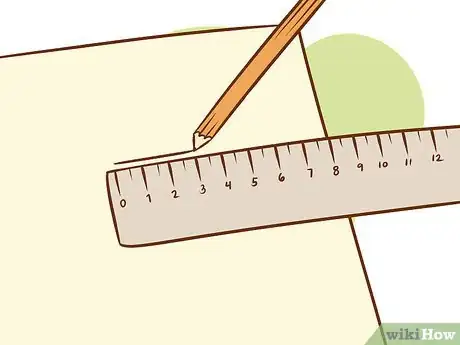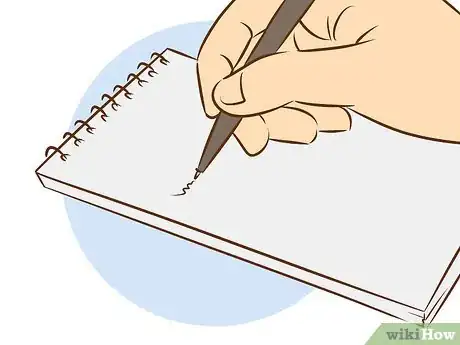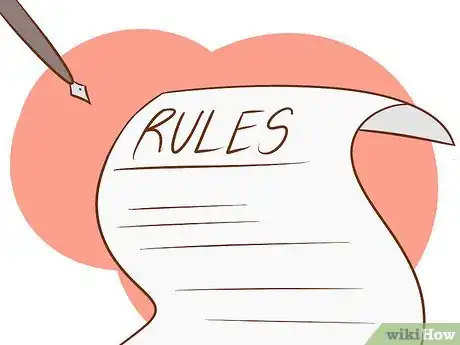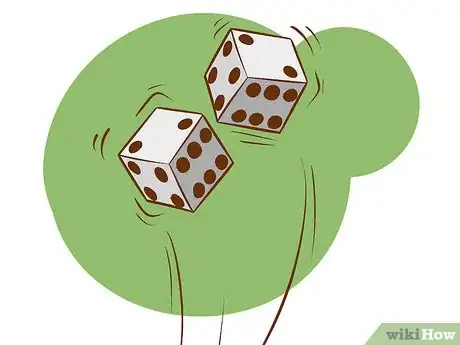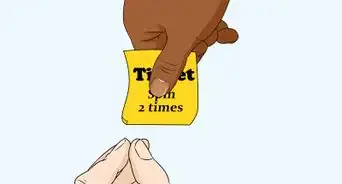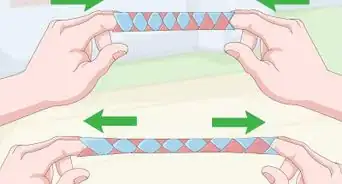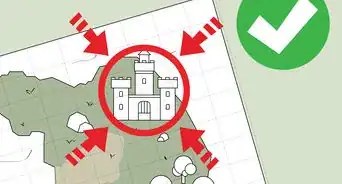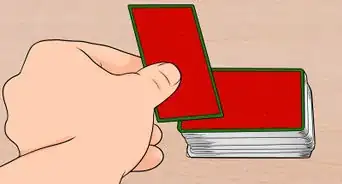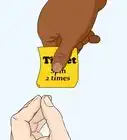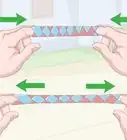wikiHow is a “wiki,” similar to Wikipedia, which means that many of our articles are co-written by multiple authors. To create this article, 35 people, some anonymous, worked to edit and improve it over time.
There are 7 references cited in this article, which can be found at the bottom of the page.
This article has been viewed 77,770 times.
Learn more...
Instead of playing the same old games every day, create your very own game to play. Devote time to developing your game: brainstorm ideas, assess potential concepts, and name your game. Create the various components of your game, such as a playing field, equipment, accessories, and player roles. After writing a set of clear, brief, and complete rules, play the game.
Steps
Developing a Concept for Your Game
-
1Brainstorm ideas for a new game. When you are starting a new project, no idea is a bad idea and collaboration is highly beneficial. Get a piece of paper, grab a pen or pencil, and gather around a table with your fellow inventors. As you all take turns sharing, write down every idea.
- Allow your ideas to be vague or even impossible.
- Don’t criticize or edit the ideas of others.
- Let the ideas of others inspire you.
- Allow everyone a chance to speak.[1]
-
2Assess the ideas and select the concept for your game. Take time to consider each idea on your brainstorm list. Eliminate ideas that are impossible to execute. Strike concepts that seem unoriginal. Circle exciting potential new games. Highlight ideas that you and your fellow inventors are familiar with, such as a new game that combines your favorites sports or expands upon your favorite board game. Merge ideas that excite—hybrid games can be really fun! Whittle the list down until it contains one idea: the concept of your new game.[2]Advertisement
-
3Name your game. Choosing a name for your new game is a process that requires creativity and patience. When selecting a name, assess it against the following criteria:
- Is the name unique?
- Is the name appropriate?
- Is the name catchy?
- It may take you awhile to settle upon the perfect name for your game.[3]
Designing the Components of Your Game
-
1Create the game’s field or board. Sports and games are often played on a field or a board. Devote time to determining where your game will be played.
- Will you repurpose an existing sports field, like a baseball diamond, or game board?
- Will you create an entirely new space or board for your game?
- What are the dimensions?
- Are there lines and boundaries?
- What images and designs appear on your board?
- How does the space function within the context of the game?[4]
-
2Determine the number of players and develop the players’ roles. Sports and games are played by one or more players. How many players may participate in your sport or game? Occasionally, players will have different roles. List the roles players may choose between. Describe the responsibilities, advantages, and disadvantages that accompanies each role.[5]
-
3Design the equipment or additional pieces. Sports and games are often played with a variety of equipment and or pieces. Make a list of the equipment and pieces required to play your sport or game.
Writing the Rules for Your Game
-
1Summarize your game. Each set of rules should begin with a brief summary, or synopsis, of the fame. The purpose of the summary is to provide the context for the objective and rules that follow. If a summary is well-written, the objective and rules should make sense.[8]
- Craft your summary as you would write an elevator pitch. It should be clear, concise, and powerful. It should have a hook and be visual. It should not take players more than one minute to read.[9]
-
2State the game’s objective. The objective, or goal, is the outcome players are striving to achieve. It provides the game with a purpose. The goal also lays the foundation for all of the game’s rules.[10]
- What is the primary accomplishment players are striving to achieve? Does the person or team with the most points, money, or resources win? Does the person or team that crosses the finish line win?
-
3List the rules. The rules of your game should be clear, brief, and complete. When creating the rules of your game, keep the following in mind:
- Only use words that help teach an individual how to play—strip down your rules, removing all unnecessary words, asides, and jokes.
- Use lists, bullet points, diagrams, and examples to explain and demonstrate the object of your game.
- Group together related rules.
- Explain all terms that may be unfamiliar.
- Anticipate the questions players may have and incorporate the answers into your rules.[11]
Testing Your Game
-
1Read the rules aloud to a group of friends or family members. Well-written rules should only need to be read or heard once before the game is played. Rules that require additional explanation or a translation are not well-written. To test the quality and clarity of your rules, read the rules aloud to family members and friends.[12]
-
2Play the game. Once the rules are understood, ask friends and family members to play the game. As they play, sit back and observe their actions and reactions. Note when they appear frustrated, bored, or confused; record when they appear excited and engaged with the game.
- Consider having multiple groups of people test the game.
-
3Evaluate the tests and make any necessary changes. Assessing the results of your tests will inform the changes you make to the game. Ask your participants for their thoughts on the rules and the game. Allow them to ask questions share concerns. Remain open to their feedback and write down the constructive comments. After assessing their reactions, comments, and criticisms, select the components of your game you wish to change. Revise or completely alter these parts of your game.[13]
Community Q&A
-
QuestionHow do I find a website that I can make a game on?
 Community AnswerFind game-hosting websites. Kongregate is a great example; the site even holds development contests occasionally.
Community AnswerFind game-hosting websites. Kongregate is a great example; the site even holds development contests occasionally. -
QuestionHow can I think of a game?
 Community AnswerYou can think of a game by things that happen in your day-to-day life, a situation going on with your friends or family, or maybe a spy game about an organization.
Community AnswerYou can think of a game by things that happen in your day-to-day life, a situation going on with your friends or family, or maybe a spy game about an organization. -
QuestionHow do I invent something?
 Community AnswerBy coming up with an idea or product that no one has thought of before that would be fun or helpful.
Community AnswerBy coming up with an idea or product that no one has thought of before that would be fun or helpful.
Warnings
- Do not make games that include the use of dangerous tools, such as knives, saws, nails, and/or scissors.⧼thumbs_response⧽
References
- ↑ http://www.brighthubpm.com/project-planning/36581-brainstorming-techniques-for-project-managers/
- ↑ http://clapway.com/2015/10/14/invent-game-adventure/
- ↑ http://www.topendsports.com/sport/new/guide-name.htm
- ↑ http://www.topendsports.com/sport/new/guide-rules.htm
- ↑ http://www.kidzworld.com/article/27411-inventing-a-sport
- ↑ http://www.kidzworld.com/article/27411-inventing-a-sport
- ↑ http://www.topendsports.com/sport/new/guide-rules.htm
- ↑ http://www.playagaingames.com/games/writing_rules/
- ↑ https://www.salisbury.edu/careerservices/students/Interviews/60secondElevator.html



